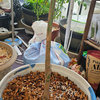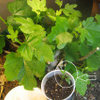Rooting Calamondins
GardenGiggles
18 years ago
Related Stories

GARDENING AND LANDSCAPINGCitrus 101: Start Your Own Backyard Orchard
This Earth Day Weekend, Add Some Green, Style and Deliciousness to Your Landscape
Full Story
DECORATING GUIDESShop Your Garden for Easy Holiday Decorations
Make your home merry and bright without all the stress and fuss — everything you need is in your own backyard
Full Story







birdsnblooms
malcolm_manners
Related Professionals
Canton Landscape Architects & Landscape Designers · Allentown Landscape Architects & Landscape Designers · Salem Landscape Contractors · Bell Gardens Landscape Contractors · Belvedere Park Landscape Contractors · Bound Brook Landscape Contractors · Chesapeake Ranch Estates Landscape Contractors · Fairhope Landscape Contractors · Panama City Beach Landscape Contractors · Pompano Beach Landscape Contractors · Siloam Springs Landscape Contractors · Streamwood Landscape Contractors · Maplewood Landscape Contractors · Quartz Hill Landscape Contractors · Agoura Hills Stone, Pavers & Concretemalcolm_manners
birdsnblooms
GardenGigglesOriginal Author
malcolm_manners
malcolm_manners
Casa_Del_Gatos
citrange2
citrange2
malcolm_manners
joereal
kquat